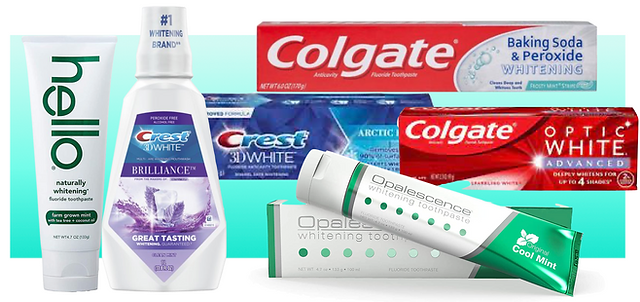Warning: Undefined array key "image" in /home/u505884188/domains/getteethwhitener.com/public_html/wp-content/plugins/custom-text-ads/custom-text-ads.php on line 120
Warning: Undefined array key "image" in /home/u505884188/domains/getteethwhitener.com/public_html/wp-content/plugins/custom-text-ads/custom-text-ads.php on line 120
Warning: Undefined array key "image" in /home/u505884188/domains/getteethwhitener.com/public_html/wp-content/plugins/custom-text-ads/custom-text-ads.php on line 120
Warning: Undefined array key "image" in /home/u505884188/domains/getteethwhitener.com/public_html/wp-content/plugins/custom-text-ads/custom-text-ads.php on line 120
Warning: Undefined array key "image" in /home/u505884188/domains/getteethwhitener.com/public_html/wp-content/plugins/custom-text-ads/custom-text-ads.php on line 120
Warning: Undefined array key "image" in /home/u505884188/domains/getteethwhitener.com/public_html/wp-content/plugins/custom-text-ads/custom-text-ads.php on line 120
Warning: Undefined array key "image" in /home/u505884188/domains/getteethwhitener.com/public_html/wp-content/plugins/custom-text-ads/custom-text-ads.php on line 120
Warning: Undefined array key "image" in /home/u505884188/domains/getteethwhitener.com/public_html/wp-content/plugins/custom-text-ads/custom-text-ads.php on line 120
Warning: Undefined array key "image" in /home/u505884188/domains/getteethwhitener.com/public_html/wp-content/plugins/custom-text-ads/custom-text-ads.php on line 120
Warning: Undefined array key "image" in /home/u505884188/domains/getteethwhitener.com/public_html/wp-content/plugins/custom-text-ads/custom-text-ads.php on line 120
Warning: Undefined array key "image" in /home/u505884188/domains/getteethwhitener.com/public_html/wp-content/plugins/custom-text-ads/custom-text-ads.php on line 120
Warning: Undefined array key "image" in /home/u505884188/domains/getteethwhitener.com/public_html/wp-content/plugins/custom-text-ads/custom-text-ads.php on line 120
Warning: Undefined array key "image" in /home/u505884188/domains/getteethwhitener.com/public_html/wp-content/plugins/custom-text-ads/custom-text-ads.php on line 120
Warning: Undefined array key "image" in /home/u505884188/domains/getteethwhitener.com/public_html/wp-content/plugins/custom-text-ads/custom-text-ads.php on line 120
Have you ever wondered how whitening toothpaste and mouthwashes actually work? Well, you’re in luck! This article will take you on a journey to explore the fascinating process behind these products. From the ingredients used to the science behind their effectiveness, you’ll gain a deeper understanding of how they can brighten your smile. So, get ready to unlock the secrets of whitening toothpaste and mouthwashes and discover the magic behind their dazzling results!
How Do Whitening Toothpaste And Mouthwashes Work?

This image is property of crest.com.
Understanding Tooth Stains
To understand how whitening toothpaste and mouthwashes work, it’s essential to first understand tooth stains. Tooth stains can be categorized into two types: extrinsic and intrinsic stains. Extrinsic stains occur on the outer surface of the teeth and are caused by various factors such as the consumption of staining foods and beverages, smoking, or poor oral hygiene. Intrinsic stains, on the other hand, occur within the tooth structure and can result from factors like aging, trauma, or certain medications. Whitening toothpaste and mouthwashes primarily focus on removing extrinsic stains, but they can also have some effect on the appearance of intrinsic stains.
Mechanism of Action
Both whitening toothpaste and mouthwashes work through similar mechanisms to enhance the brightness of your teeth. Their main goal is to target and eliminate stains on the tooth’s surface, revealing a whiter and brighter smile. These oral care products contain specific active ingredients that aid in the stain removal process.

This image is property of i.ytimg.com.
Whitening Toothpaste
Whitening toothpaste is specially formulated with ingredients that have abrasive properties. These abrasives help to physically remove stains from the tooth’s surface. The mild abrasives in whitening toothpaste scrub away at the stains, breaking them down and gradually reducing their appearance over time. It’s important to note that whitening toothpaste cannot change the natural color of your teeth but can only remove external stains.
Active Ingredients
Most whitening toothpastes contain active ingredients such as hydrogen peroxide, baking soda, or calcium carbonate. Hydrogen peroxide acts as a bleaching agent and helps break down stains on the teeth. Baking soda is effective in polishing the tooth’s surface, removing surface stains, and neutralizing acids in the mouth. Calcium carbonate works as a mild abrasive and further aids in removing stains.

This image is property of static.wixstatic.com.
Removal of Surface Stains
When you brush your teeth with whitening toothpaste, the abrasive particles scrub away at the stains on your teeth. The combination of physical friction and the active ingredients in the toothpaste work together to remove surface stains and reveal a brighter smile. Regular and consistent use of whitening toothpaste can help maintain the brightness of your teeth and prevent the buildup of future stains.
Preventing Future Staining
In addition to removing surface stains, many whitening toothpastes contain ingredients that help prevent future staining as well. Some toothpastes include a protective barrier or film on the tooth’s surface, making it more difficult for future stains to adhere. Others may contain ingredients that help break down the bonds between the stains and the tooth surface, making it easier for them to be removed with regular brushing.

This image is property of afterva.com.
Effectiveness and Limitations
While whitening toothpaste can effectively remove surface stains and maintain the brightness of your teeth, its effectiveness may vary depending on the type and severity of the stains. It may not be as effective in treating deep or intrinsic stains. Additionally, whitening toothpaste should be used as directed and in moderation to avoid excessive abrasion, which could damage the tooth enamel.
Whitening Mouthwashes
Whitening mouthwashes are another option to consider if you’re looking to enhance the whiteness of your teeth. These mouthwashes contain active ingredients that help remove stains and brighten your smile. One common active ingredient found in whitening mouthwashes is hydrogen peroxide.

This image is property of images.squarespace-cdn.com.
Hydrogen Peroxide
Hydrogen peroxide is a bleaching agent commonly used in dental whitening products. It helps to break down the chemical bonds of stains, making them less visible. When used in mouthwashes, hydrogen peroxide targets surface stains and gradually whitens the teeth over time. However, it’s important to use whitening mouthwashes according to the instructions provided, as excessive or prolonged use may cause tooth sensitivity or gum irritation.
Bleaching Process
Whitening mouthwashes with hydrogen peroxide work through a bleaching process. When you rinse your mouth with the whitening mouthwash, the hydrogen peroxide begins to break down stains on the tooth’s surface. It penetrates the enamel and acts on the pigmented molecules within the stains, breaking them into smaller, less noticeable particles. Regular use of the mouthwash helps to maintain the whiteness of your teeth.
Complementary Use with Toothpaste
To maximize the effectiveness of whitening mouthwashes, they can be used in conjunction with whitening toothpaste. While the toothpaste physically scrubs away surface stains, the mouthwash helps to further remove and prevent the buildup of stains. Using both products together can provide a comprehensive approach to maintaining a brighter smile.
In conclusion, both whitening toothpaste and mouthwashes work by targeting and removing surface stains on your teeth. They contain active ingredients, such as hydrogen peroxide, baking soda, and mild abrasives, which help break down and eliminate stains. While these products can effectively remove external stains and enhance the whiteness of your teeth, they may not be as effective on intrinsic or deep stains. It’s important to use these products as directed and in moderation to protect your tooth enamel. Consider adding both whitening toothpaste and mouthwash to your oral care routine for a comprehensive approach to maintaining a brighter and whiter smile.